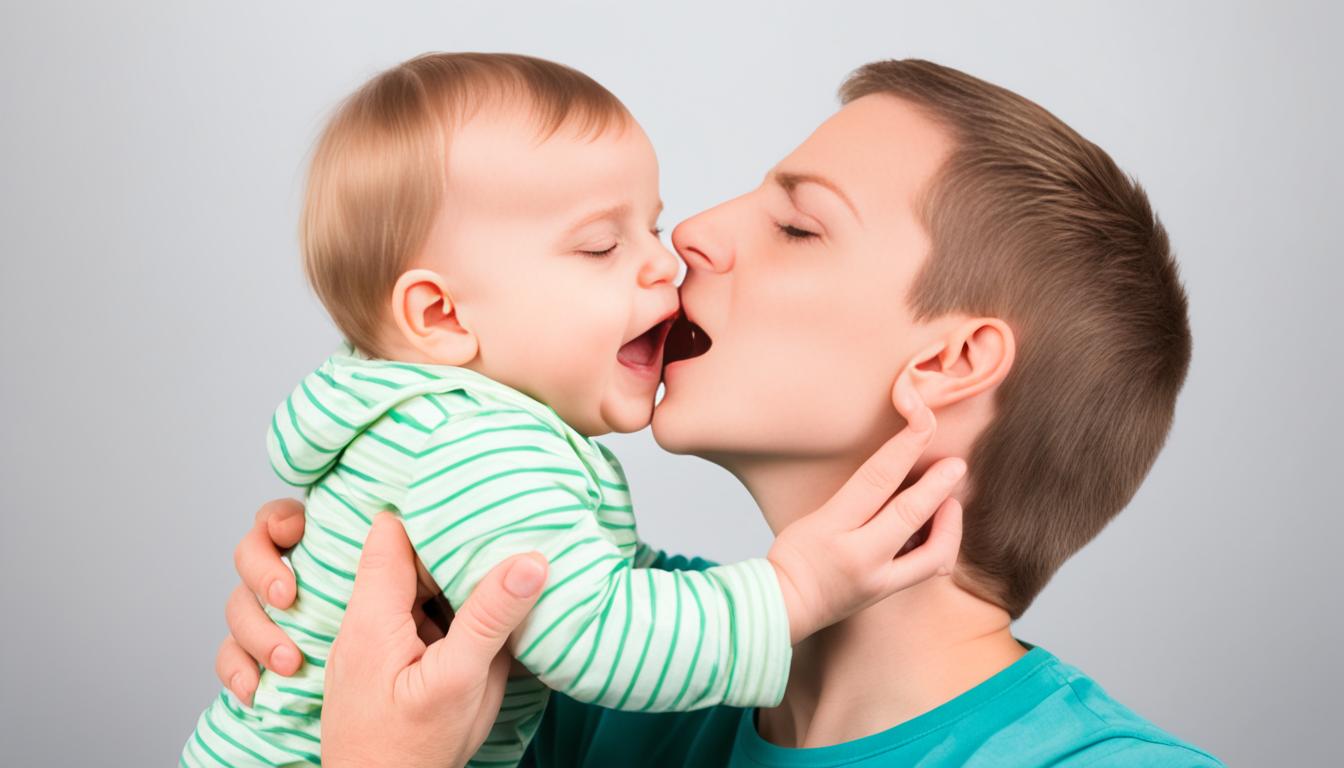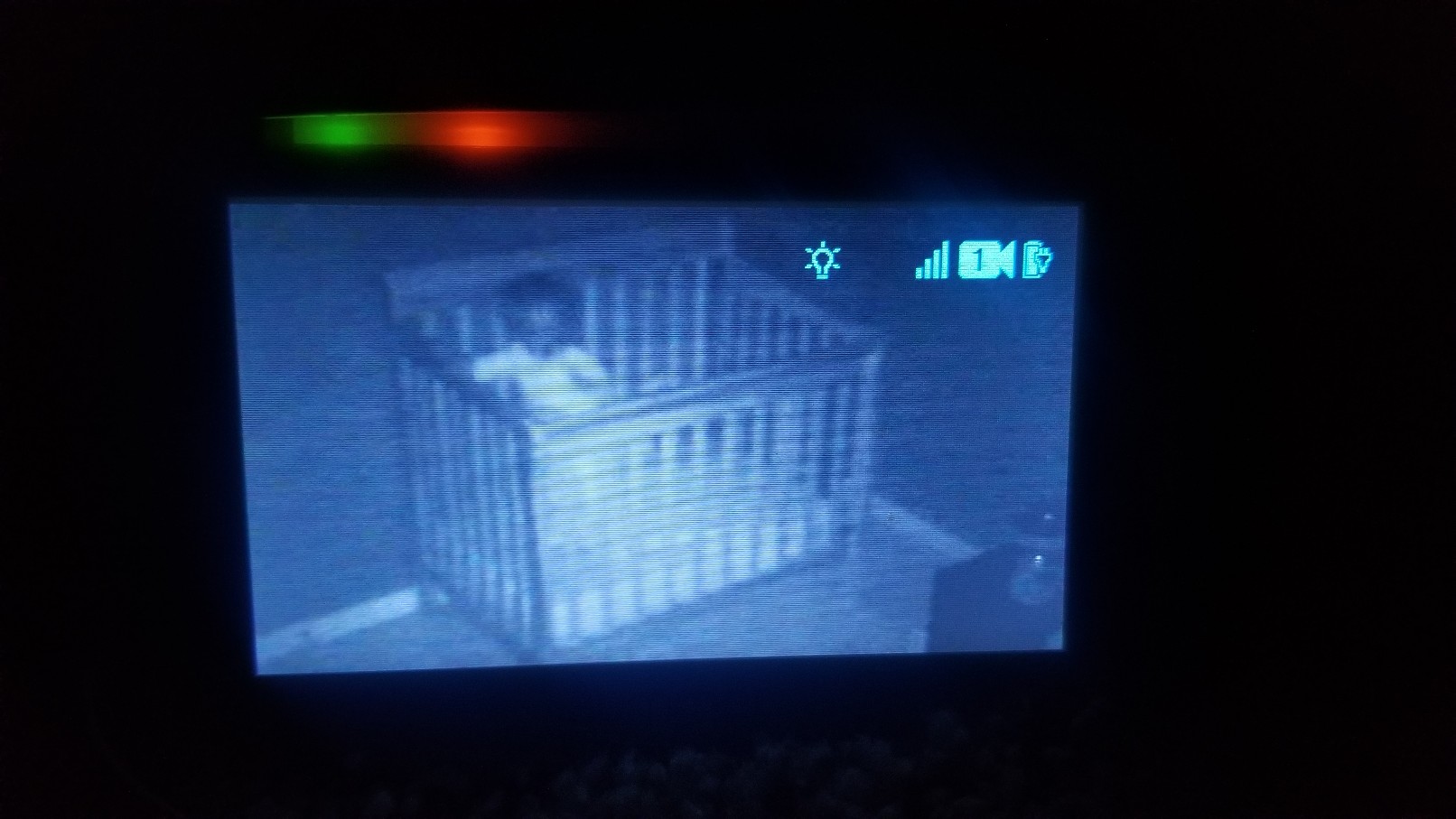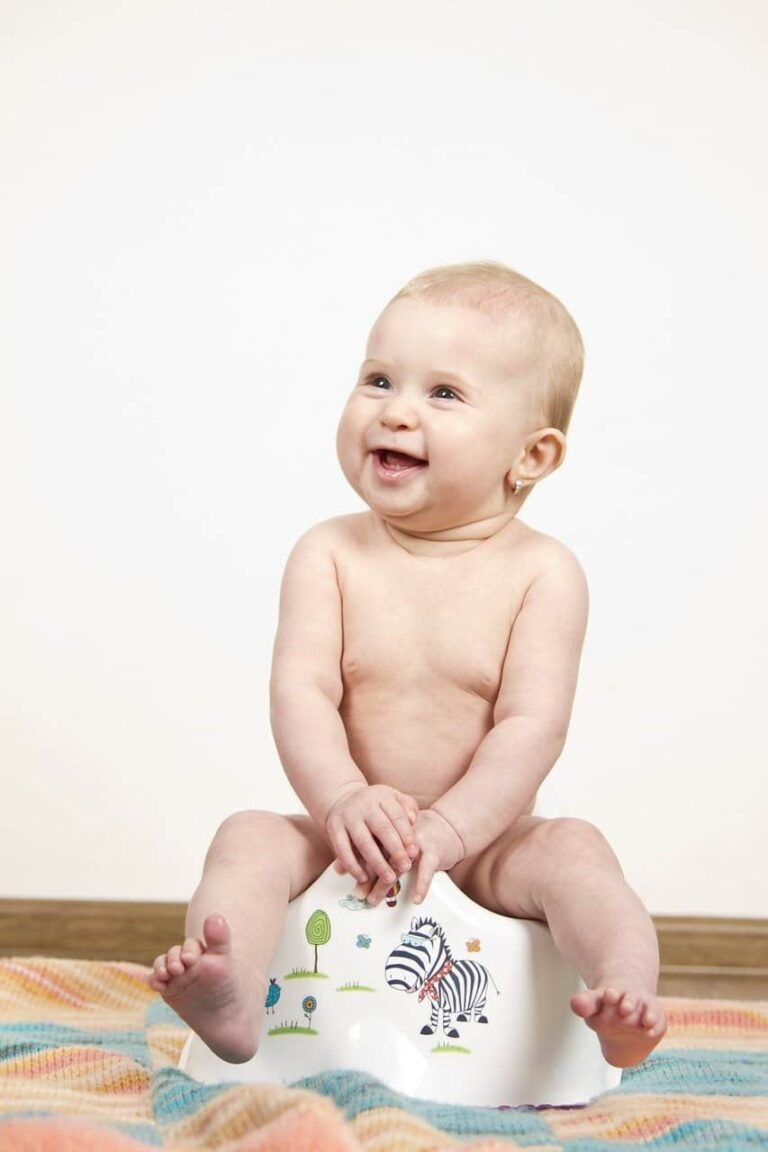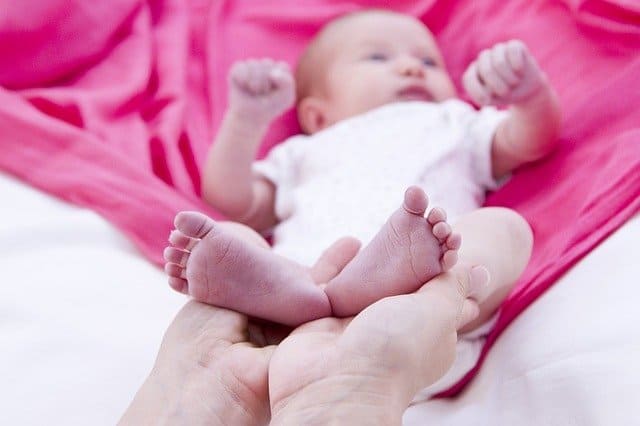How Do You Deliver Rescue Breaths To A Child
CPR, or cardiopulmonary resuscitation, is a life-saving procedure performed when a child experiences a cessation of breathing or heartbeat. Rescue breathing, one of the key components of CPR, provides essential oxygen to the child’s lungs during an emergency situation. Along with chest compressions, this procedure helps to circulate blood throughout the body until professional medical assistance arrives or the child’s vital signs are restored. Learning infant and child CPR is paramount in order to be prepared for an unforeseen emergency.
Key Takeaways:
- CPR is performed when a child’s breathing or heartbeat has stopped.
- Rescue breathing provides oxygen to the child’s lungs.
- Chest compressions help circulate blood throughout the body.
- It is crucial to learn infant and child CPR to be prepared for emergencies.
- Ensure you follow the step-by-step guide for performing CPR on a child.
Performing CPR on a Child – Step-by-Step Guide
When it comes to performing CPR on a child, knowing the steps to follow can make all the difference. Administering rescue breaths and chest compressions correctly can help save a child’s life. Here is a step-by-step guide on how to perform CPR on a child:
- Check for alertness and shout for help. It’s important to have assistance in case you need it.
- Place the child on their back, ensuring no neck or head movement if there’s a suspected spinal injury.
- Perform chest compressions by placing the heel of one hand on the breastbone and pressing down about one-third to one-half the depth of the child’s chest. Give 30 compressions quickly and without pausing.
- Open the child’s airway by lifting the chin with one hand while tilting the head back.
- Look, listen, and feel for breathing. Watch for chest movement, feel for breath on your cheek, and listen for any signs of breathing.
- If the child is not breathing, cover their mouth tightly with your mouth, pinch their nose closed, keep the chin lifted, and give two rescue breaths. Each breath should take about a second and make the child’s chest rise.
- Continue the cycle of chest compressions (30) and rescue breaths (2) for about 2 minutes.
- If the child still does not have normal breathing or shows signs of poor perfusion, call 911 and continue CPR until help arrives.
- If the child starts breathing again, place them in the recovery position and monitor their breathing until help arrives.
Remember, these steps are crucial in performing CPR on a child. By following this child resuscitation technique, you can provide life-saving assistance until professional medical help arrives. Stay calm, act quickly, and remember that your actions can make a difference.
When to Perform CPR on a Child
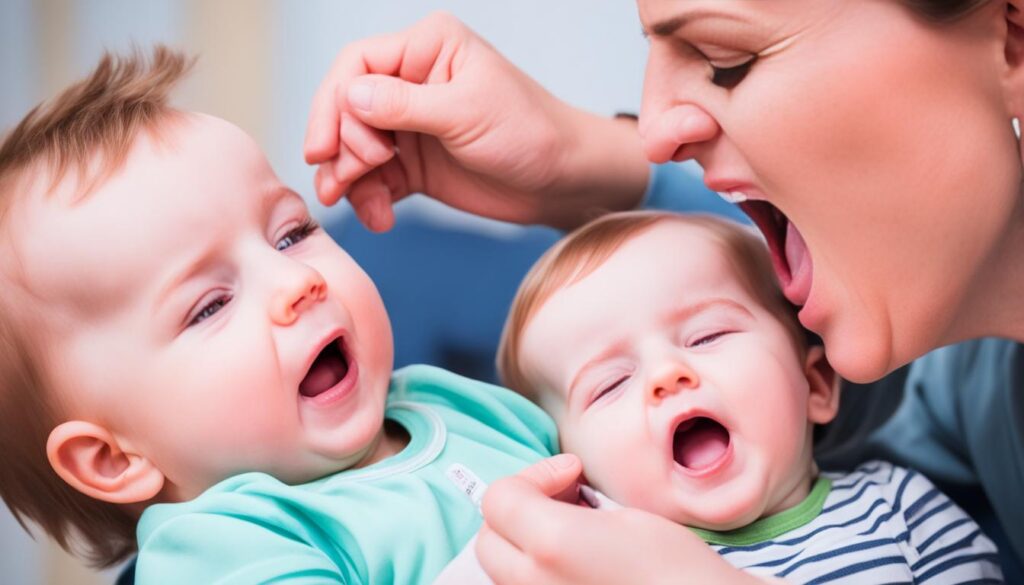
CPR should be performed on a child if they exhibit the following symptoms:
- No breathing
- No pulse
- Unconsciousness
Common reasons for the child’s heartbeat and breathing to stop include choking, drowning, electrical shock, excessive bleeding, head trauma, lung disease, poisoning, and suffocation. It is crucial to act quickly in these situations, as permanent brain damage can occur after only 4 minutes without oxygen.
The Importance of Quick Action
When a child is experiencing breathing difficulties or has lost consciousness, immediate CPR can make a life-saving difference. By providing rescue breaths and chest compressions, you can help maintain the circulation of oxygen-rich blood to vital organs, sustaining the child until professional medical help arrives.
“CPR gives you the opportunity to be the hero your child needs in an emergency. By acting promptly and following proper techniques, you can increase the chances of survival and reduce the risk of long-term complications.”
Remember, every second counts when it comes to CPR. Stay calm, assess the situation, and initiate the necessary steps to provide care. By knowing when and how to perform CPR on a child, you can be prepared to respond effectively in critical situations.
Safety Tips to Prevent Accidents
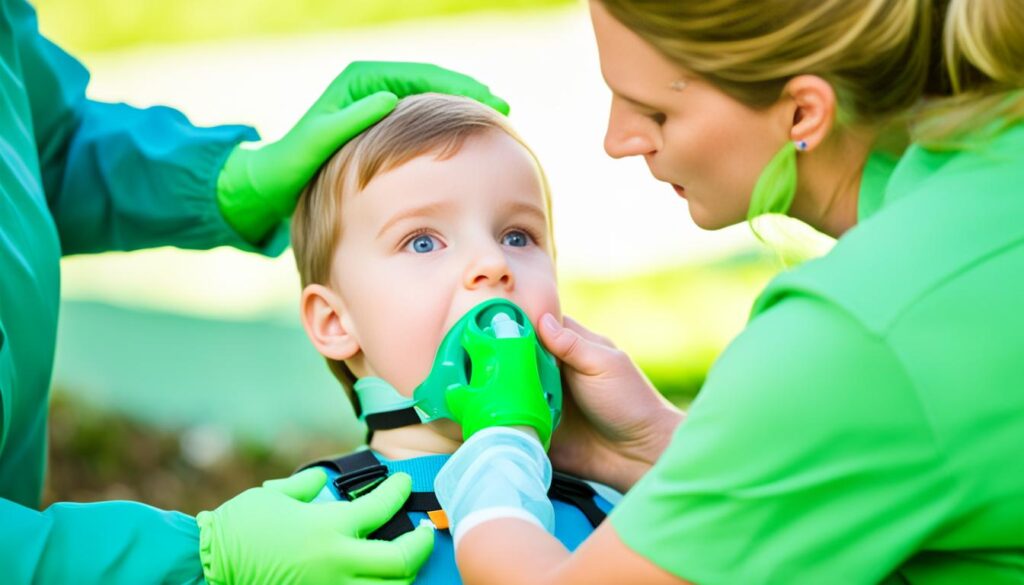
Preventing child accidents is crucial in ensuring their safety. By following these child safety measures, you can create a secure environment for your little ones:
1. Teach Children Basic Principles of Family Safety
Empower your children with knowledge of basic safety practices. Teach them to stay away from strangers, not to open the door to unfamiliar people, and to inform you if they encounter any suspicious situations.
2. Teach Children How to Swim and Bike Safely
Swimming and biking accidents are common among children. Enroll them in swimming lessons to teach them how to stay safe in water, including proper diving techniques and understanding pool rules. Similarly, educate them about bike safety, such as wearing helmets, obeying traffic rules, and avoiding busy roads.
3. Use Age-Appropriate Car Seats and Follow Guidelines for Proper Installation
Ensure your child’s safety while traveling in a vehicle by using age-appropriate car seats. Follow the manufacturer’s instructions to correctly install and secure the car seat in your vehicle. Regularly check for any recalls or updates to ensure the seat is up to safety standards.
4. Store Guns in an Isolated Cabinet
If you have guns in your home, it is vital to keep them out of reach of children. Store firearms in a locked and isolated cabinet, separate from ammunition. Educate your child about the dangers of guns and the importance of never handling them without adult supervision.
5. Teach Children the Meaning of “Don’t Touch”
To prevent accidents with potentially dangerous objects, teach children the meaning of “don’t touch.” This simple instruction can help prevent injuries from hot stoves, electrical outlets, sharp objects, and other hazardous items.
6. Supervise Children Carefully and Childproof Your Environment
Never leave children unattended, especially around water sources or furniture prone to tipping over. Be vigilant in childproofing your home by installing safety gates, securing cabinets and drawers, covering electrical outlets, and using window guards. These measures can significantly reduce the risk of accidents.
“Prevention is the best form of protection when it comes to child safety. By implementing these safety tips, you can help ensure a secure environment for your children.”
Remember, accidents can happen even with the best safety measures in place. It is essential to be prepared by learning infant and child CPR and having a basic knowledge of first aid. The next section will focus on the importance of CPR training and the use of AEDs in emergencies.
Importance of CPR Training and AED Use
Ensuring child safety is every parent and caregiver’s top priority. One key aspect of being prepared for emergencies involving children is to acquire proper CPR training. Certified infant and child CPR courses equip you with the necessary knowledge and skills to respond effectively in critical situations. Knowing how to administer CPR can save precious lives.
In addition to CPR training, utilizing automated external defibrillators (AEDs) can significantly increase the chances of restoring a child’s normal heart rhythm. AEDs, which can be found in many public places and are also available for home use, are user-friendly devices designed to deliver an electrical shock to the heart in cases of cardiac arrest. When used in conjunction with CPR, AEDs greatly enhance the chances of a successful resuscitation.
It is crucial to remember that when using an AED, following the instructions precisely is essential. These devices are designed to guide you through the process, ensuring safe and effective use. However, seeking professional medical help should always be a priority, even if an AED is used successfully. Remember, time is of the essence in emergency situations, and every second counts in saving a child’s life.
By investing the time to receive child CPR training and becoming familiar with the use of AEDs, you are taking proactive steps to be prepared for any emergency involving a child. Training empowers you with the confidence and skills needed to face critical situations with clarity and efficiency, making a significant difference in the outcome. Remember, your quick and informed actions as a parent or caregiver can truly be life-saving.
FAQ
How do you deliver rescue breaths to a child?
To deliver rescue breaths to a child, first, make sure the child is lying on their back. Then, open their airway by lifting their chin with one hand while tilting their head back. Next, cover the child’s mouth tightly with your mouth, pinch their nose closed, and give two rescue breaths, making their chest rise. Each breath should take about a second. Continue this cycle of chest compressions and rescue breaths until help arrives or the child starts breathing again.
What are the steps to perform CPR on a child?
When performing CPR on a child, follow these steps:
- Check for alertness and shout for help.
- Place the child on their back, ensuring no neck or head movement if there’s a suspected spinal injury.
- Perform chest compressions by placing the heel of one hand on the breastbone and pressing down about one-third to one-half the depth of the child’s chest. Give 30 compressions quickly and without pausing.
- Open the child’s airway by lifting the chin with one hand while tilting the head back.
- Look, listen, and feel for breathing. Watch for chest movement, feel for breath on your cheek, and listen for any signs of breathing.
- If the child is not breathing, cover their mouth tightly with your mouth, pinch their nose closed, keep the chin lifted, and give two rescue breaths. Each breath should take about a second and make the child’s chest rise.
- Continue the cycle of chest compressions (30) and rescue breaths (2) for about 2 minutes.
- If the child still does not have normal breathing or shows signs of poor perfusion, call 911 and continue CPR until help arrives.
- If the child starts breathing again, place them in the recovery position and monitor their breathing until help arrives.
When should CPR be performed on a child?
CPR should be performed on a child if they exhibit the following symptoms: no breathing, no pulse, or unconsciousness. Common reasons for a child’s breathing and heartbeat to stop include choking, drowning, electrical shock, excessive bleeding, head trauma, lung disease, poisoning, and suffocation. Acting quickly is crucial, as permanent brain damage can occur after only 4 minutes without oxygen.
What are some safety tips to prevent accidents involving children?
Here are some safety tips to help prevent accidents involving children:
- Teach children basic principles of family safety.
- Teach children how to swim and bike safely.
- Use age-appropriate car seats and follow guidelines for proper installation.
- If you have guns in your home, keep them locked in an isolated cabinet.
- Teach children the meaning of “don’t touch” to prevent accidents with potentially dangerous objects.
- Supervise children carefully, especially around water and furniture, and childproof your environment.
How important is CPR training and the use of an AED for children?
It is essential for parents and caregivers to learn infant and child CPR through accredited courses. CPR training provides the knowledge and skills to respond effectively in emergency situations. Additionally, automated external defibrillators (AEDs) can be found in many public places and are available for home use. These devices can be crucial in restoring a child’s normal heart rhythm. It is important to follow the instructions precisely when using an AED and to seek professional medical help as soon as possible.

